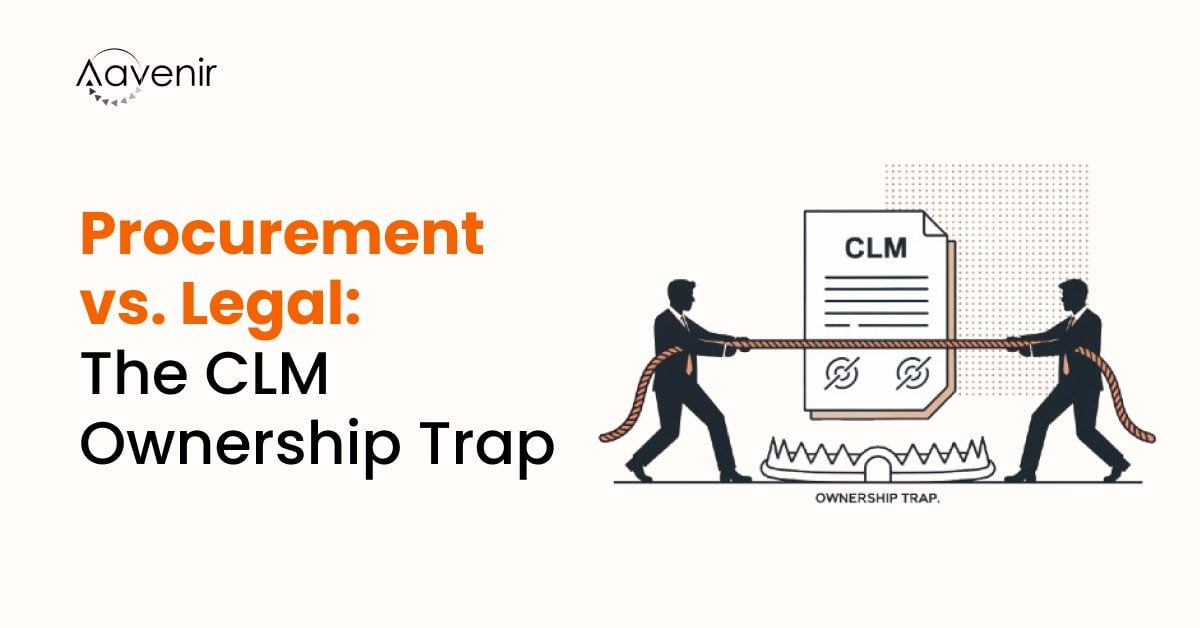Each day across industries, companies spend thousands of hours and millions of dollars negotiating deals and sweating over minute details in the terms and conditions of the final contractual obligation management. But what happens next?
Too often, a drop-off in attention to the contract stipulations is observed (on both the buy and sell-side).— Although it seems as if the finish line has been crossed, remember that the effort is just the beginning. Managing contract obligations isn’t a one-time job.
Are you fulfilling your contractual obligations properly? Know how to get it right.
Despite being widely discussed, Contract Lifecycle Management and Contract Obligations Management concepts are ignored vehemently. Companies frequently neglect to put implement any controls (virtually) for the active contract and fail to manage the contractual obligations agreed upon during the negotiation phase. This failure leaves them exposed to substantial risks and loss of revenue.
What are the Key Challenges in Managing Contract Obligations?
It is imperative to manage contractual obligations well to gain maximum value from your contract. Without a proper contract obligation management system in place, it is hard to ascertain whether a business deal is working as per the terms and conditions or if there is a breach of contract. Important milestones of delivery, payment, and more may easily get missed.

Few contracts comprise penalty clauses, which come into enforcement whenever specific obligations are not met by a contracting party. Not tracking & non-compliance to these contract obligations can lead to missed opportunities and may translate into heavy financial losses for an organization.
Managing the promises in the form of obligations, commitments, SLAs, and entitlements enshrined in contract clauses and terms has three key challenges :

1. Time-consuming manual identification of obligations from multiple contract repositories:
Large organizations have an overwhelmingly huge number of contracts containing an even significantly higher number of obligations. Keeping track of such a vast number of obligations without any way to configure alerts and reminders is a tedious task.
Obligations are often hidden in complex contract language and must be manually extracted, identified, and interpreted. Identifying such obligations in a sea of complicated technical wording, page after page is nonetheless a mammoth task.
Also updating data for contract milestones, penalty clauses, and more, in spreadsheets, is cumbersome and error-prone. Considering all the time and effort to enter the data manually, (effective) tracking is still a problem.

Thus, it is time-consuming & requires intense human intervention to identify obligations from multiple contract repositories, spreadsheets, word docs, and emails.
2. Undefined ownership of obligations fulfilment actions:
There is a lack of clarity regarding the ownership of contract obligation management duties for specific agreements. Accountability & delegation of these duties is the primary reason behind the issue in handling obligation.
Often, the spreadsheet owner and the person responsible for managing the obligations of a specific contract are not the same. Manual processes are error-prone, not scalable, and do not proactively surface obligations.

3. Lack of cross-function visibility
Actual and target value comparison is difficult to observe since actual value data is spread across multiple disparate systems such as ERP (Enterprise Resource Planning), CRM (Customer Relationship Management), FMI (Financial Management Information), and HRM (Human Resource Management).
One of the most crucial challenges in executing a proper contract management solution is a lack of visibility and insight into obligation performance. When there is a difference in the actual & target value data, such negligence can lead to substantial business risks.

Along with that a lack of cross-function visibility also hampers inter-departmental performance. Non-compliance to obligations hurts revenue and increases the risk of penalties and litigations including, reputational damage, financial loss, and soured partner relationships.
How does poor management of obligations impact Organizations?
Contract obligations management means ensuring that contracting parties fulfill the commitments laid out in the contract. Therefore, it is imperative to manage these obligations well, to get the maximum value from your contracts, Here’s why?
Prevention of Revenue Loss – Average company leaks over 9% of its revenues annually due to contract related issues – IACCM
Improving off-contract spend – Market average 54% of spend is contract compliant; 66% transactions are contract compliant – Ardent Partners
Tracking of Compliance – Only 29% of organizations regularly collect data on the compliance with standards/scorecards by other part of the business or trading partners – IACCM

How can Aavenir Obligationflow improve compliance with contracts?

Effective contract obligation management and appropriate governance tools provide greater visibility and control over the contract process by providing a more logical environment. It helps manage contract documents, performance, milestone data, and an environment where contract obligations can be easily tracked and adhered to.
Here are some of the benefits from Aavenir Obligationflow, which can help to improve compliance with contracts for your organization:
- Greater visibility into contract processes – helping significantly reduce the risk and exposure that comes with complex agreements.
- Maximize Contract Value – Cost optimization & revenue recovery
- Improve relationships with service providers
- Ensure that the vendors comply with contract terms & conditions
- Improve contract structuring for sustained cost reduction
What’s Next?
Furthermore, contract obligation management isn’t something that you do once.. It needs to be performed on an ongoing basis, throughout the lifecycle of every contract. There is, however, a more efficient way to handle this. To manage such a staggering number of contractual obligations, one needs an automated system that can offer configurable alerts and reminders and act as a secure repository of all contracts and supporting documents with user-defined access.



